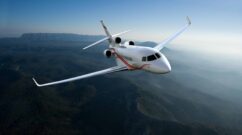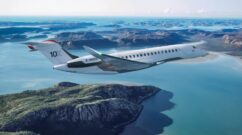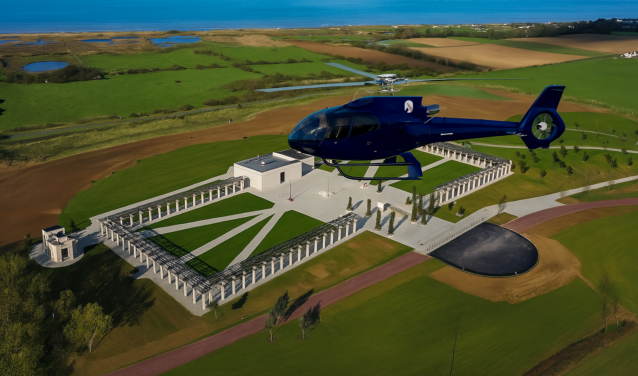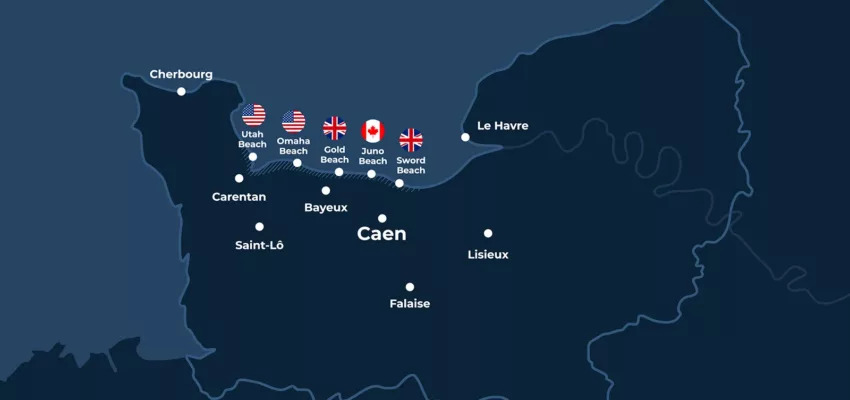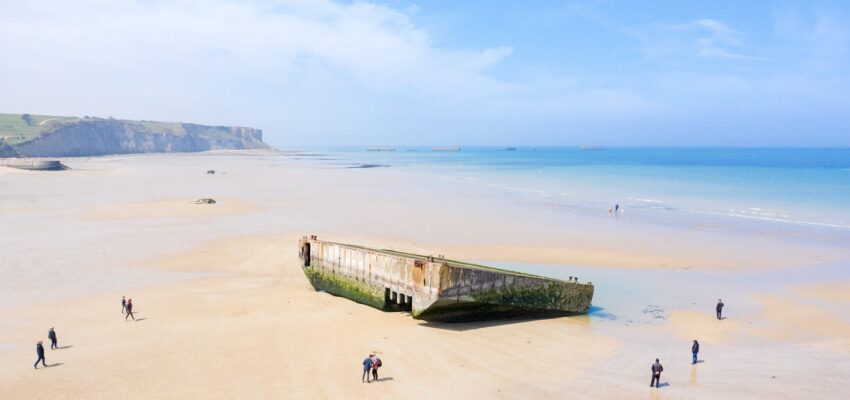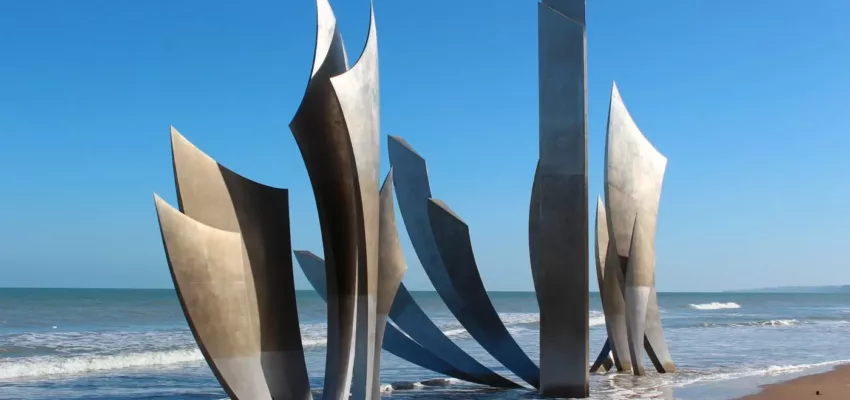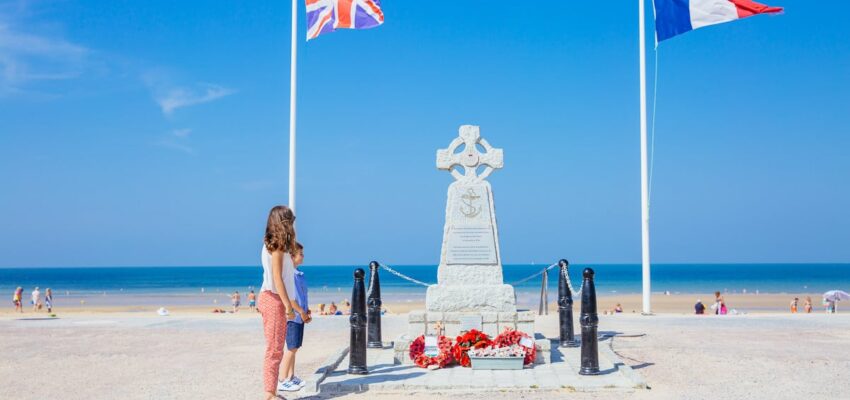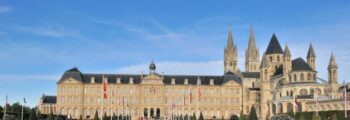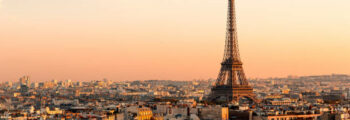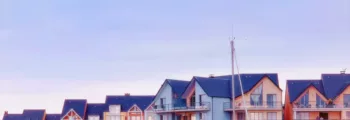D-Day landing beaches in Normandy: introduction
Helicopter flight over the D-Day landing beaches: an itinerary steeped in history, 1h30 from Paris
On June 6, 1944, the Normandy coast became the turning point in a global conflict. To this day, the region bears the memory of those who crossed the Atlantic to liberate Europe. AEROAFFAIRES offers you an exceptional itinerary, departing from our private terminal at the Paris Heliport.
Aboard a privatized helicopter, you’ll reach Normandy in less than two hours, with a commentary over the emblematic sites of the D-Day landings: Pegasus Bridge, Sword, Juno and Gold beaches, the Longues-sur-Mer batteries, Pointe du Hoc, and the military cemeteries of Utah Beach, Omaha and Colleville-sur-Mer.
On arrival, you’ll be met by a specialized guide in a private vehicle, who will accompany you to the key sites of remembrance: D-Day Museum, Pointe du Hoc, Omaha Beach. The return flight takes off from the Château de la Chenevière park, near the American cemetery.
On the way back, the helicopter flies over Lisieux, the Seine valley, then enters Parisian airspace: direct view of La Défense, the Arc de Triomphe, the Champs-Élysées, the Fondation Louis Vuitton… until landing at the Paris Heliport.
Practical information about the helicopter experience to the D-Day landing beaches
Departure fromParis heliport, Porte de Sèvres. You will be welcomed in a private terminal with reserved parking and direct access to the aircraft. The flight is aboard an Airbus Helicopters twin-engine Écureuil or Dauphin.
Heliport de Paris – Issy-les-Moulineaux (LFPI)
-
Official name: Héliport de Paris – Issy-les-Moulineaux
-
ICAO code: LFPI
-
GPS coordinates: 48°49′59″N / 2°15′56″E
-
Altitude: 30 m / 98 ft
-
Manager: Aéroports de Paris (ADP Group)
-
Use: Business aviation, medical evacuations, institutional flights, sightseeing tours and private transfers
-
Address: 61 rue Henry Farman, 75015 Paris
-
Proximity: 15 min from central Paris, accessible by car or VTC via Porte de Sèvres
-
Opening hours:
-
Monday to Saturday: 07:00 – 23:00
-
Sunday and public holidays: 07h00 – 22h00
-
-
Facilities:
-
Helicopter parking area (up to 10 aircraft)
-
Hangars and technical facilities
-
Private passenger terminal with waiting lounge, secure parking, direct boarding
-
Personalized welcome by AEROAFFAIRES
-
Outbound flight itinerary
- Flight overwestern Paris: Versailles, Lisieux, Caen: The flight begins with an overflight of the Domaine de Versailles. The park’s basins, French-style avenues and the Grand Canal come to life as if in a print. The helicopter then gains cruising altitude and sets course for Normandy, skirting Lisieux and the outskirts of Caen.
- Passing over the Pegasus Bridge and the Merville museum: the Bénouville bridge, renamed the Pegasus Bridge, appears below: the point of entry for British airborne troops on the night of June 5-6, 1944. Nearby, the casemates of the Merville Museum mark the front lines of the Allied assault.
- Sword, Juno and Gold Beaches: Sword Beach to the east, Juno and Gold to the west: three strategic sectors of the British and Canadian landings. From the air, you can still make out defensive structures and coastal museums, between dunes and urbanized areas.
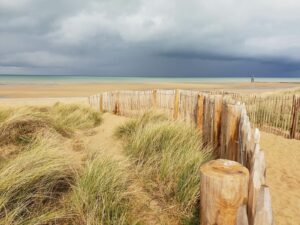
- Arromanches and the remains of Mulberry Harbour: the modules of the artificial harbour built by the Allies in June 1944 are still visible at sea. A logistical feat that can be fully appreciated from the air.
- Longues-sur-Mer, Omaha Beach, the scene of heavy American losses, offers a striking view of the terrain: narrow beaches, wooded hills, visible strongpoints. Later, the Pointe du Hoc, scene of the American Rangers’ assault: a promontory riddled with ancient shell craters, still intact. One of the most powerful places on the route. The sheer cliffs and remnants of bunkers speak volumes about the courage of the men of the 2nd Ranger Battalion.
- Landing at Utah Beach at 10.30 am: your private guide will be waiting for you as you disembark to begin your tour of the museum and continue your overland itinerary.
Ground program
- Guided tour of the Utah Beach Landing Museum

- Seaside lunch at “Le Roosevelt” restaurant
- Visit to Domaine de Ravenoville, an elegant renovated manor house located just a few minutes from Utah Beach. This historic site, which can now be privatized, offers an immersion in traditional Cotentin architecture and a peaceful stroll through its wooded grounds.

- Visit Pointe du Hoc, Omaha Beach, Colleville American cemetery
Return flight
- Take-off from Château La Chenevière (Port-en-Bessin): after a day full of emotions and discoveries, the helicopter takes off again from the wooded grounds of Château La Chenevière, a discreet property nestled between the beaches and hedged farmland of the Bessin region.
- Over the Seine valley, Rouen, Giverny, La Roche-Guyon: You fly over Rouen, then the Giverny area, with a clear view of the main river routes and wooded areas. Then on to La Roche-Guyon, on the border between Normandy and the Île-de-France region.
- Return to Paris, with views of the major monuments: Eiffel Tower, Arc de Triomphe, Concorde…
- Landing atParis heliport at 7:00 pm: return to Paris heliport. Welcome by your AEROAFFAIRES assistant. Possibility of organizing an immediate transfer (VTC, van with driver, complementary air transfer).
Do you need a price estimate?
Request for quoteLocation & helicopter access to Utah Beach
The plane lands directly next to the Utah Beach Museum. From Paris, the flight takes around 1h30. By comparison, a road journey takes 4h30 to 5h30, depending on traffic.
| Route | Distance (km) | Time by helicopter | Time by road |
|---|---|---|---|
| Paris – Utah Beach | 330 km | 1h30 | 4h30 to 5h30 |
Examples of flight plans
Flight plan – Airbus Helicopters Écureuil or Dolphin (twin-turbine)
- 08:45 am: Passenger welcome at Paris heliport
- 09:00 : Take-off
- 10:30 am: Landing at Utah Beach
- Visit and lunch at “Le Roosevelt” restaurant
- 18h00 : Take-off from Château La Chenevière
- 7:15 pm: Landing in Paris
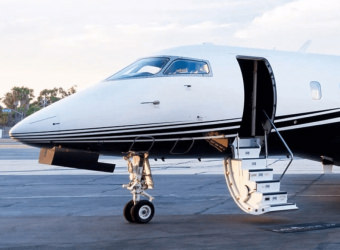
Do you need a price estimate?
Request for quoteHelicopter recommendations for the region
The itinerary has been designed to give you time to remember, but also time to rest. Whether it’s lunch by the sea or a stopover at the château, these addresses are more than stopovers: they extend the experience, with simplicity and elegance.
Restaurant : Le Roosevelt (Utah Beach)
Located directly on Utah Beach, this historic restaurant offers simple, local cuisine in a moving setting overlooking the sea. It’s here that our passengers lunch, between two visits, facing the dunes and the memory.
Hotel: Château La Chenevière
An 18th-century manor house transformed into a charming hotel in Port-en-Bessin. Refined rooms, wooded grounds, gourmet cuisine. From here, the return flight to Paris takes off.
Book your flight at D-Day Normandy landing beaches: helicopter experience with AEROAFFAIRES
Whether you’re a history buff or looking for an exceptional day out, AEROAFFAIRES will design a smooth, memorable flying experience for you. Personalized welcome, private flight, on-site guide, lunch included… Every step is anticipated.Contact us for a customized quote and plan your day in the footsteps of the D-Day.
A question? Contact our airline experts

Isabelle CLERC
CEO AEROAFFAIRES

François-Xavier CLERC
Founder AEROAFFAIRES
Our airline experts remain at your disposal to help you at every stage of your reservation.
Go further
The D-Day landing beaches: a little history
From the capital, it takes just a few minutes’ flight to leave the present behind and reach one of the most historic sites of the 20th century. The D-Day beaches tell the story of courage, strategy and memory.
At dawn on June 6, 1944, more than 150,000 Allied soldiers landed on the Normandy coast as part of Operation Overlord. The day marked the beginning of the liberation of occupied Europe. Five beaches became names steeped in memory: Utah, Omaha, Gold, Juno and Sword. Each bears witness to a precise military strategy, an extraordinary logistical effort, and thousands of lives lost. From the air, these beaches reveal their expanse, the remains of bunkers, artificial harbours and the natural lines that structured the invasion. The overflight allows us to embrace in a single glance the scale and complexity of this decisive twentieth-century operation.

